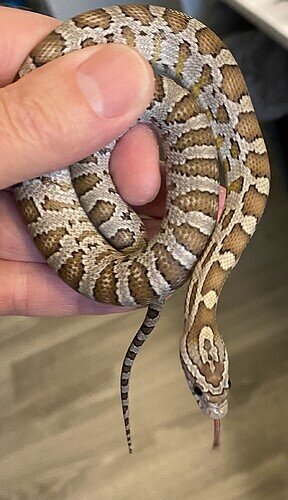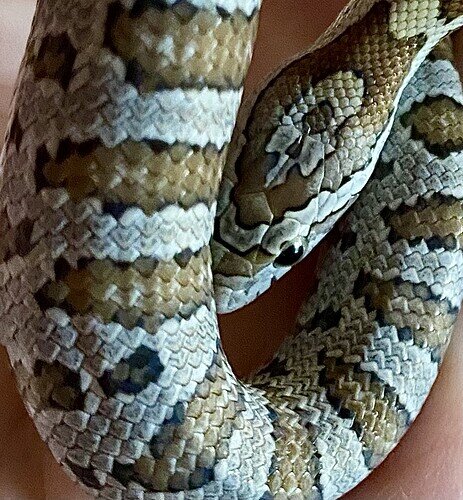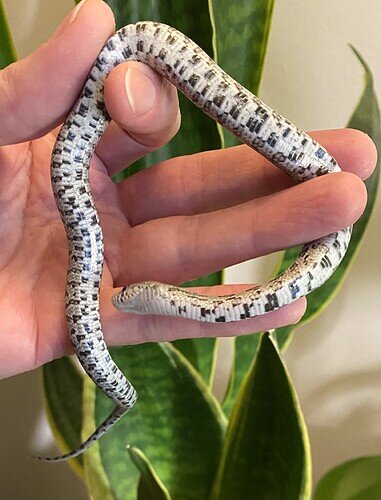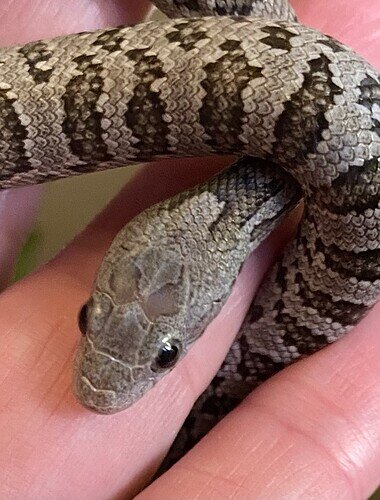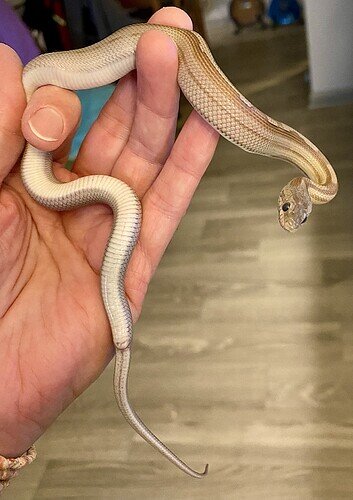You lucky girl that you got one! I’m jealous Olivia! ![]()
![]()
![]() Just kidding!
Just kidding! ![]()
She’s got the only other 66%phets (if recessive) I was willing to give up too. Two. But don’t be jealous! ![]()
They are giving me python vibes with their chubby bodies. It would be very interesting to see where this goes and if it becomes an inhertable gene.
Oh, I have 3 from Olivia and 1 from Caryl and to me they are the only ones for me! ![]() . But truly yours are fantastic! My heart is so happy for you!
. But truly yours are fantastic! My heart is so happy for you! ![]()
I’m going to be honest here, this is outright a defect, not a morph, and it should not be propagated. Specifically this looks to be short spine syndrome or something akin to it. This is not like a dwarf locality, or breeding for size, this is a very prominent change in the overall body structure of the animal. I’d be having them examined by a vet, xrays taken, etc, not breeding them until you can be sure it’s not SSS. An animal with SSS will have compressed vertebrae, and normal sized organs squished into a much smaller, misshapen body cavity.
This is also not the first time SSS has been seen in corn snakes, here’s another case, also from Miami origins:
Edit: My apologies to @spiritserpents, didn’t realize the RFUK post was yours.
I knew you would have a strong opinion on this! I always love to see all sides of something and I had a feeling that you would be on the “not a fan” side of this.
You do bring up a really good point about SSS. That was one of the first things I thought of when I sat down and looked at it again. The reason why I asked about mobility is because, at least from what I understand, SSS and similar issues almost always result in them.
I do agree that a vet visit is going to be very important thing that needs to be done as soon as possible or at least before breeding
@deanaii just thought I would ask but do you plan on changing the name? Bantams (at least in the chicken world) are a much smaller breed versus the normal chicken breeds. A bantam chicken will usually only way 2-4 while a standard chicken is 6+ pounds. The name doesn’t seem the most fitting to me as they actually seem to be growing quicker and are larger than a lot of similarly sized corns I have seen on the market
Thanks for the feedback! I can tell you from that pic, that the Bantams I hatched are not the same thing. They have normal heads and tails with varying degrees of reduced length between. And Miami is mostly just a look these days. The chances of that UK Miami phase being related to mine are remote. I have never heard of two dwarfish hatchlings coming out of the same clutch. Only one-offs here and there. I have a bunch. All thriving, but under close observation.
I consider scaleless a defect, and it’s alleged to be of hybrid origin, but I acknowledge that there’s room for the mutation in the hobby. And if I’m not thrilled by how casually it’s been spread into the captive gene pool, then that’ll only inform how I handle this mutation, if it is indeed heritable. ![]()
That’s a great question I’ve discussed with my hobby buddies. The biggest ones are around 50g. I don’t think I’ll have a real idea of their adult shape until they’re around 150g at least, and maybe not until later. I’m not even sure they’ll get THAT big. More questions than answers at this point for me too. ![]()
You can’t go off of one photo to say this is not that, SSS animals often have normal front and rear proportions. For example, this is Quasimodo, a GSD with it:
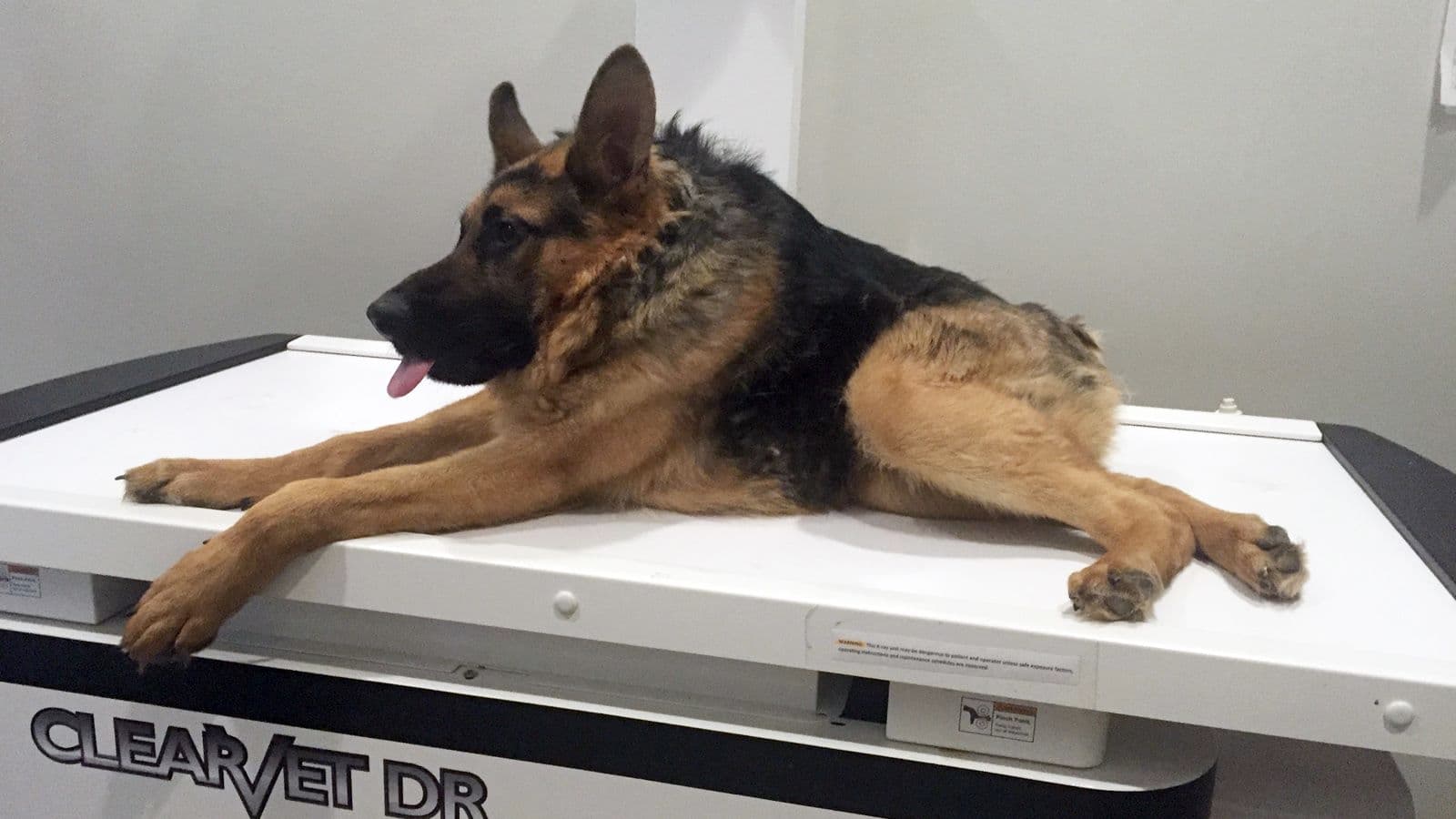
As you can see, his very front and rear are normally proportioned, while his torso is compressed. The big indicators that this is SSS is the severe shortening and widening of the midbody, as well as the compression of the pattern and scales. Your description of the texture is due to the shortening of the body segments.
Please, before pursuing this project, actually take these animals in for examination and xray. While you may consider Scaleless a defect, it has very little impact on the animal’s quality of life. Short spine can have a far larger effect on health, quality of life, breeding, etc. It would be highly unethical to purposely breed an animal with SSS.
Thanks for the feedback. These concerns have all been taken into consideration since the clutch first hatched. As far as I know, dwarfism as a mutation, as opposed to polygenetic insular dwarfish, has not been observed in snakes. Perhaps it still hasn’t! It’s uncharted territory, which should and wlll be navigated with some care.
You don’t know until you try! ![]()
![]()
Sombra is a high expression Bantam Miami Caramel Cinder het SK. She was a slow starter, but she’s doing great now. She’s about 22g.
Interesting. My first thought was to wonder if they had been any radiography yet. Something like SSS is my initial impression, as well. There are individual animals whose number of vertebrae vary from their species’ typical number (and Arab horses normally have one fewer vertebra than other breeds). To me, this doesn’t look like missing vertebrae, though. It does look like compressed vertebrae.
I don’t know the age at which young corns would have laid down enough calcium to make bones show clearly, but I’m thinking it would be a good idea to get rads before that point as well as after. I also find myself wondering if they’ll become less flexible as the spine calcifies further. I’m concerned about their longer term quality of life as individuals, apart from the question of if they can successfully be bred. If they were mine, I’d have a good look at a lot of imaging while considering if they should be.
From what I’ve read, I believe that you’re doing the same things that I would be doing at this point. Documenting and observing, observing and documenting. I would also be contacting the nearest veterinary teaching hospital to see if anyone was interested in following them, especially since you have nine clutchmates, a sibling cohort. It’s quite possible that you may be able to get that radiography for free.
You’ve observed that their movement seems normal. What about climbing? Do they seem to do as much as typical baby corns? Do they do it differently, hold on or fall off more or less? Do they dangle from their tails in a similar fashion? I know that “normal” is a range, but again, you’ve got a cohort to observe.
About the name, if indeed it needs a name, Bantam brings up a very different idea to me. Bantams (or “Banties” in country parlance) are smaller and lighter than many larger chicken breeds, in build as well as size. These are kinda the opposite.
Thank you for sharing, @deanaii. Interesting.
Hey Caryl! Thanks for the feedback.
Yeah, “Bantam” seems to have different associations for different people. I still like it for the name NOW, but as I responded elsewhere, the name may not fit whatever their adult look is. And I have a bunch of Ashy/Z Corns telling me that what I want them to be called might not matter in the end! ![]()
I got out of the hobby once before because most of the very expensive, new-at-the-time lavender morphs I bought from top names in the hobby, raised, and bred were throwing crazy amounts of kinked offspring. I was pretty devastated. Turns out that the top breeders knew what was going on, but 50% cull clutches were acceptable to them. I promise to do my due diligence better than they did, but I’ll be likely relying on my forty years of experience in assessing them, and won’t be going broke having them meticulously medically evaluated. Just being honest about that!
You never know when a new visual mutation will be accompanied by some kind of internal time bomb. Scaleless and palmetto haven’t even been around long enough to evaluate. As far as I know, neither of those mutations, even the alleged-hybrid one, have been medically evaluated for long term health issues. Yet those genes are everywhere in the captive gene pool now.
As far as mobility goes, they are the same as any corn on the ground. My setups for babies don’t allow for much evaluation of climbing ability. I’d imagine from handling that they’re not as good at climbing as a standard corn. It would make sense anyway.
Bottom line for now: as the only guy who’s even handled these, I’ll tell you that they are standard corns in all ways, but in a non-standard form. But it’ll be a few years before I have more answers than questions about these guys. I’ll remain positive until the animals themselves give me a reason not to be. ![]()
Lol I’ve been doing this long enough to remember the Ashy/Z discussions. We all know how that went. I don’t see any Ashy or Z corns listed on MorphMarket, but there are plenty of Cinders. ![]() And I remember too well the chaos of early Lavender projects, devastating to so many.
And I remember too well the chaos of early Lavender projects, devastating to so many.
Experienced keepers often know more about care than inexperienced medical people. I am sure you’re going to be a careful and forthright as possible about that. I don’t see any reason to have lots of preemptive testing done for them. Given that this is a potential spinal issue though, I would be talking to my vet about a group rate for radiography. Basic xrays are relatively cheap and could be enormously informative.
Staying positive about individuals is never wrong. Treating these unusual babies like every other corn as they grow, so long as they’re behaving as such, makes sense. That said, in my mind part of the due diligence you mention would include imaging if there are any plans to produce more.
What are your plans for the parents this season?
I agree with you on most points. ![]()
This season I’ll be pairing the presumed het Bantam parents again. That’s the next logical step in evaluating all of this anyway. She could throw zero Bantams, and this’ll all have been a fun fluke.
If it’s not a fluke, and no other deleterious characteristics present themselves, I’ll wait until some high and low expression indvuduals reach adulthood, and then have them x-rayed and evaluated.
Cookiecrisp is a medium expression Bantam Miami Caramel (irregular) Stripe het Shatter. He started out kinda picky, so he’s around 30g.
This might just be me but does anyone else see that when you get to the cloaca, the tail looks like it is almost too small for the snake?

